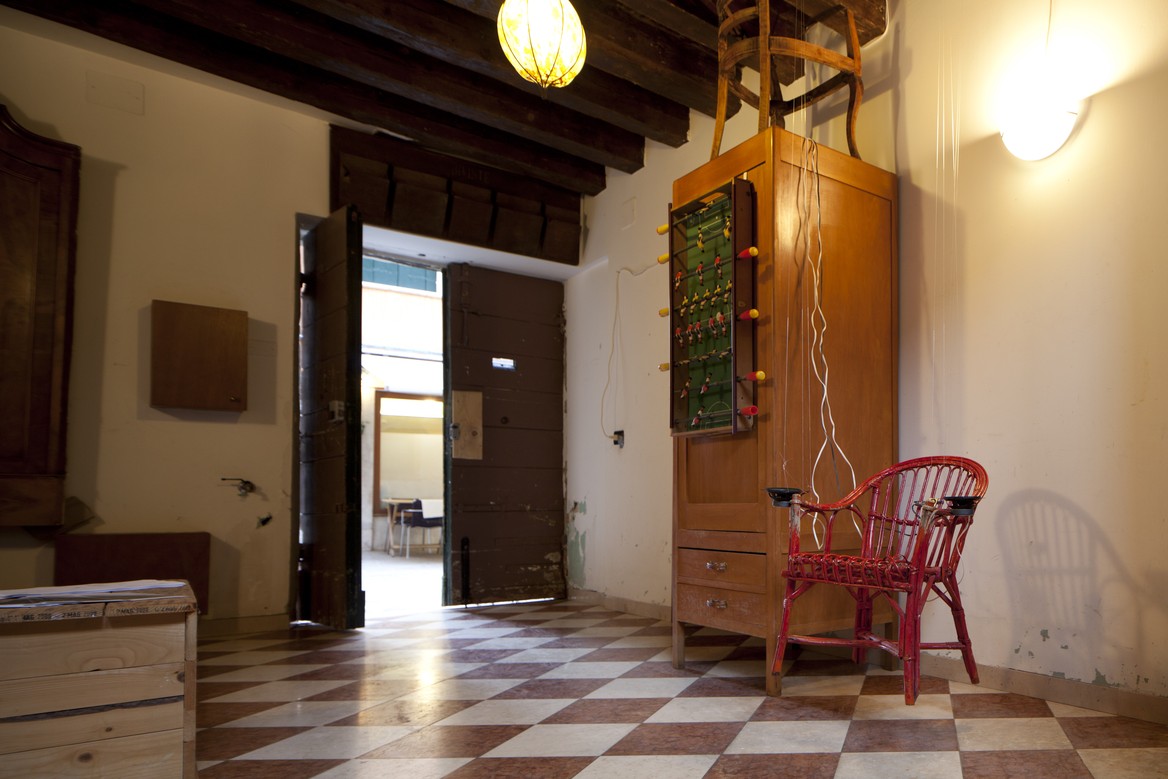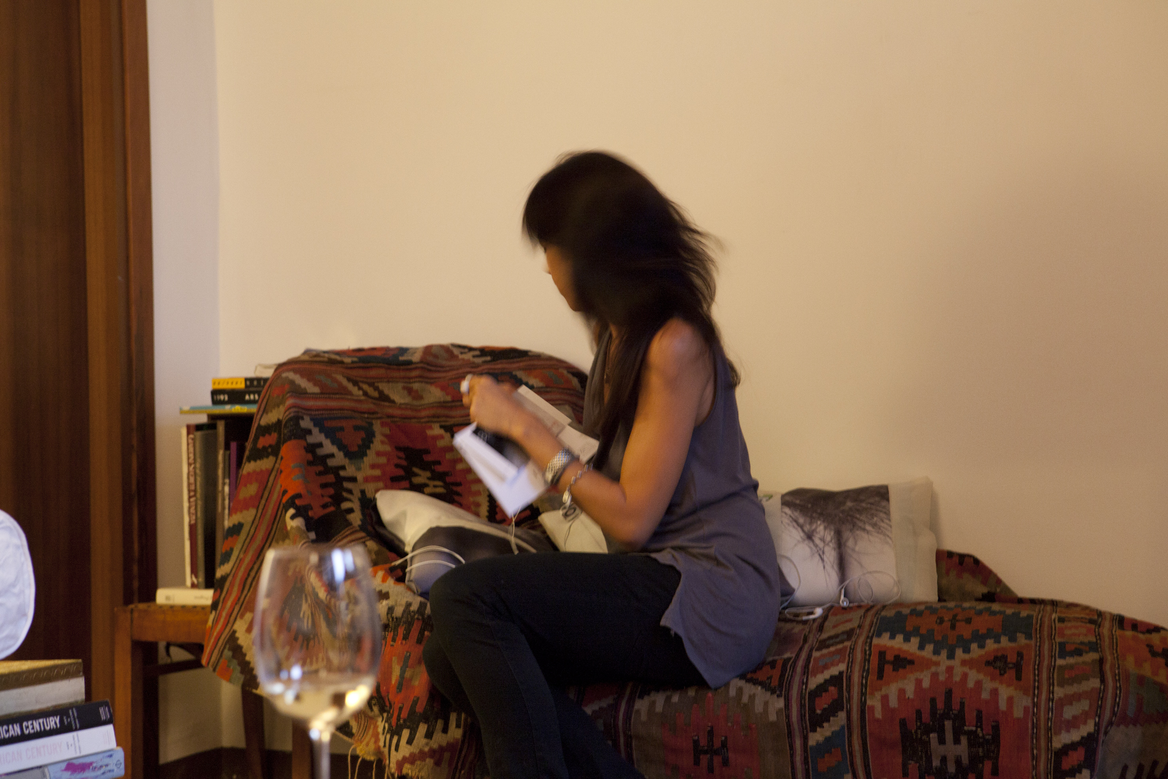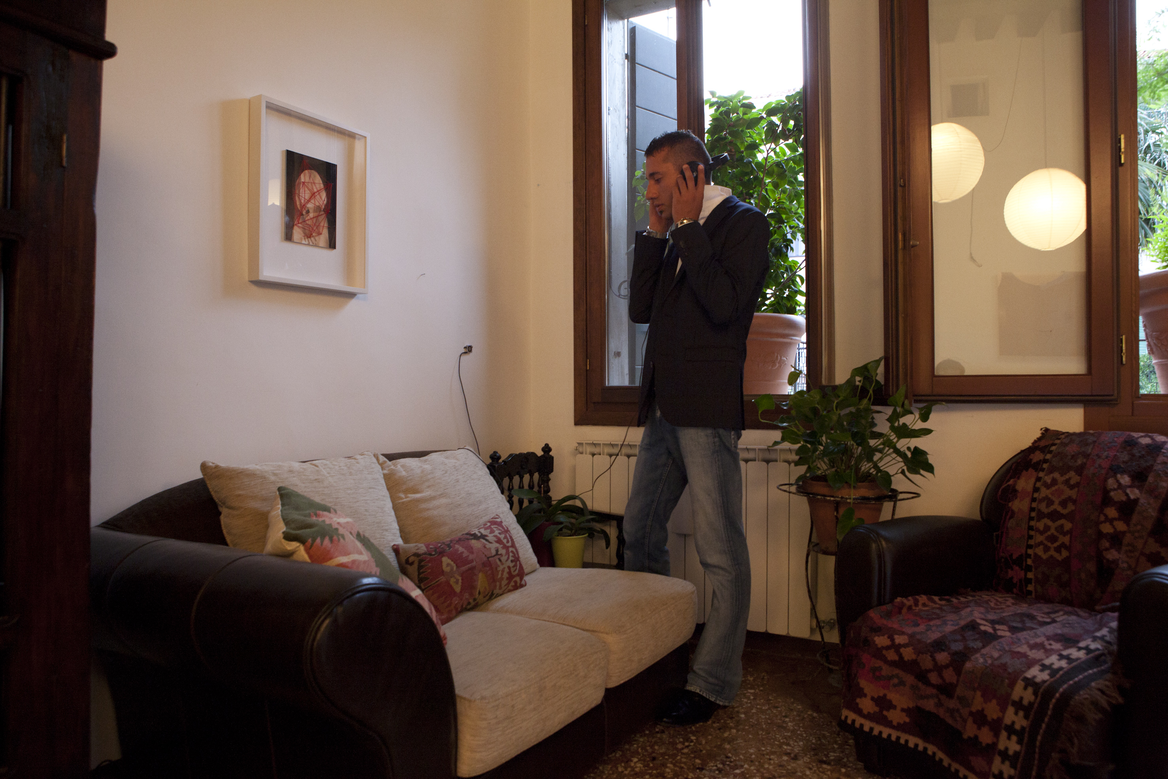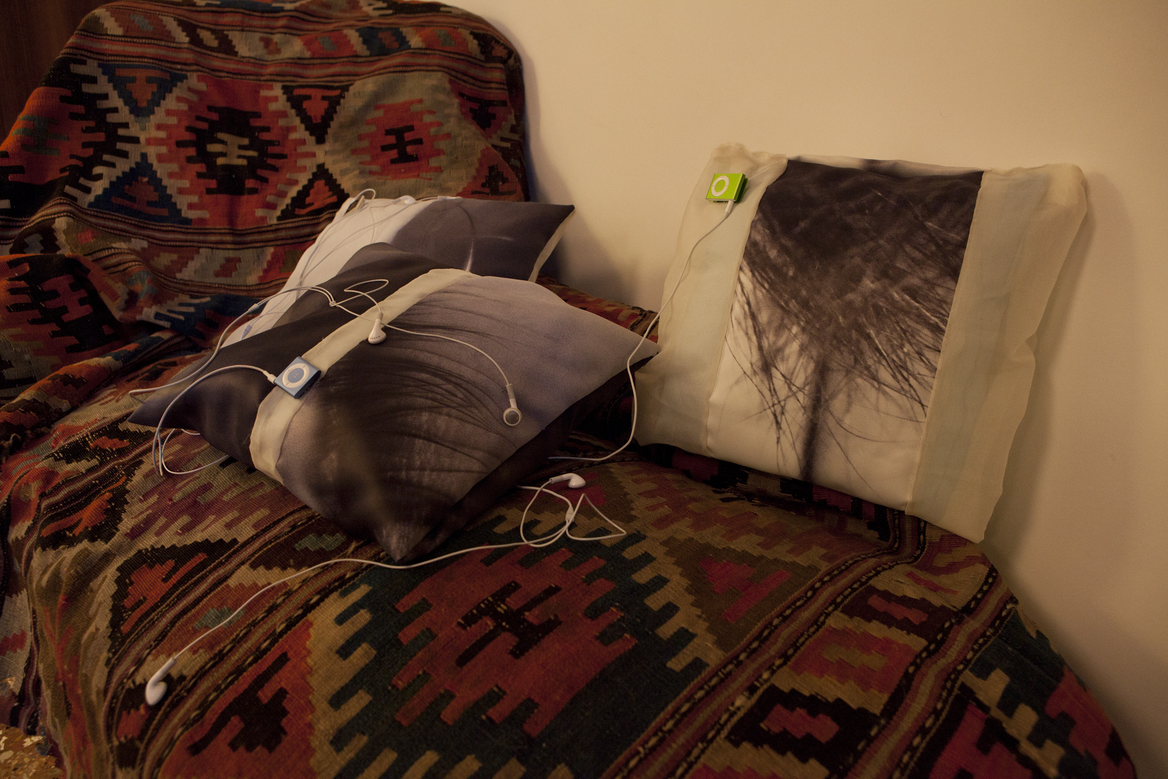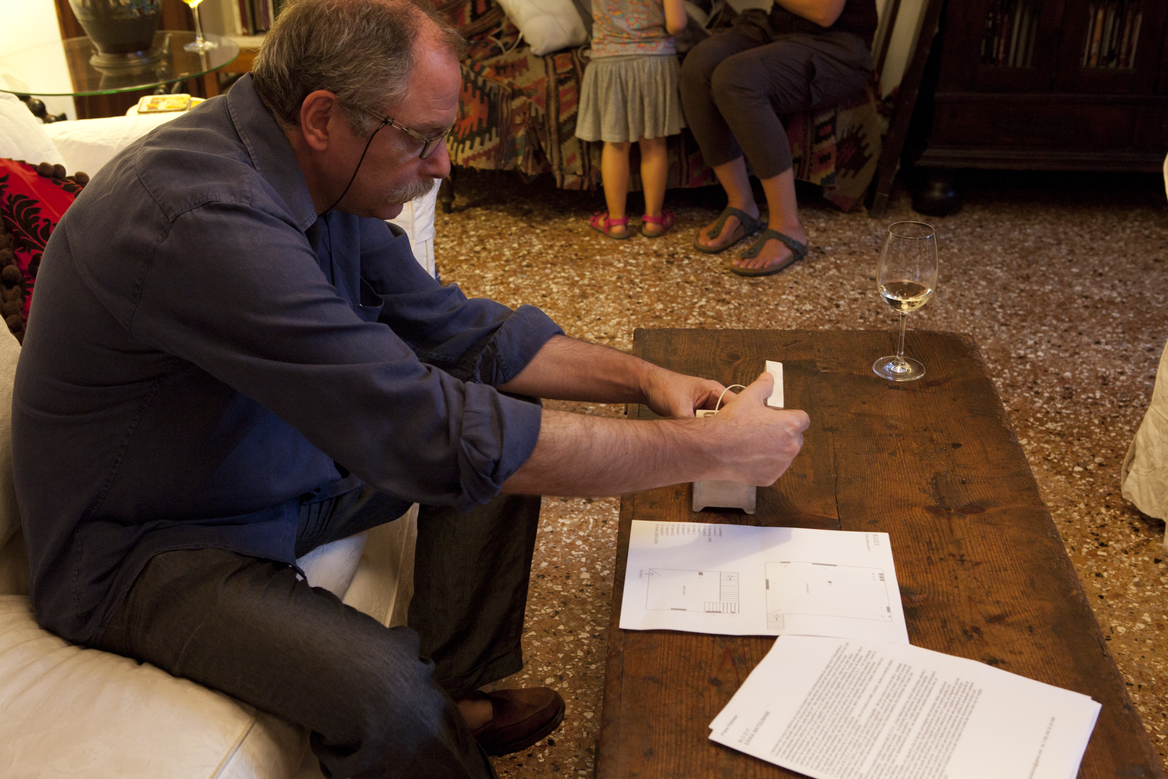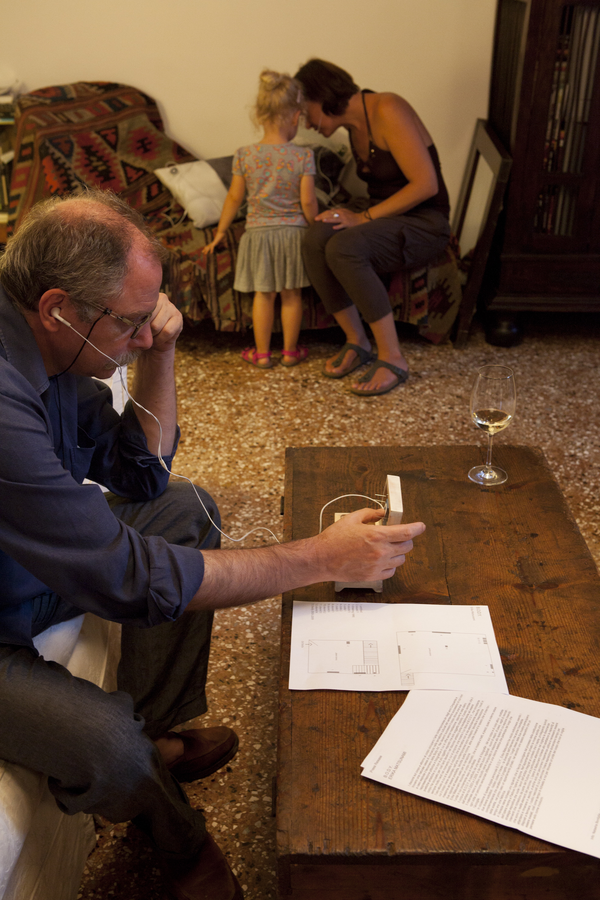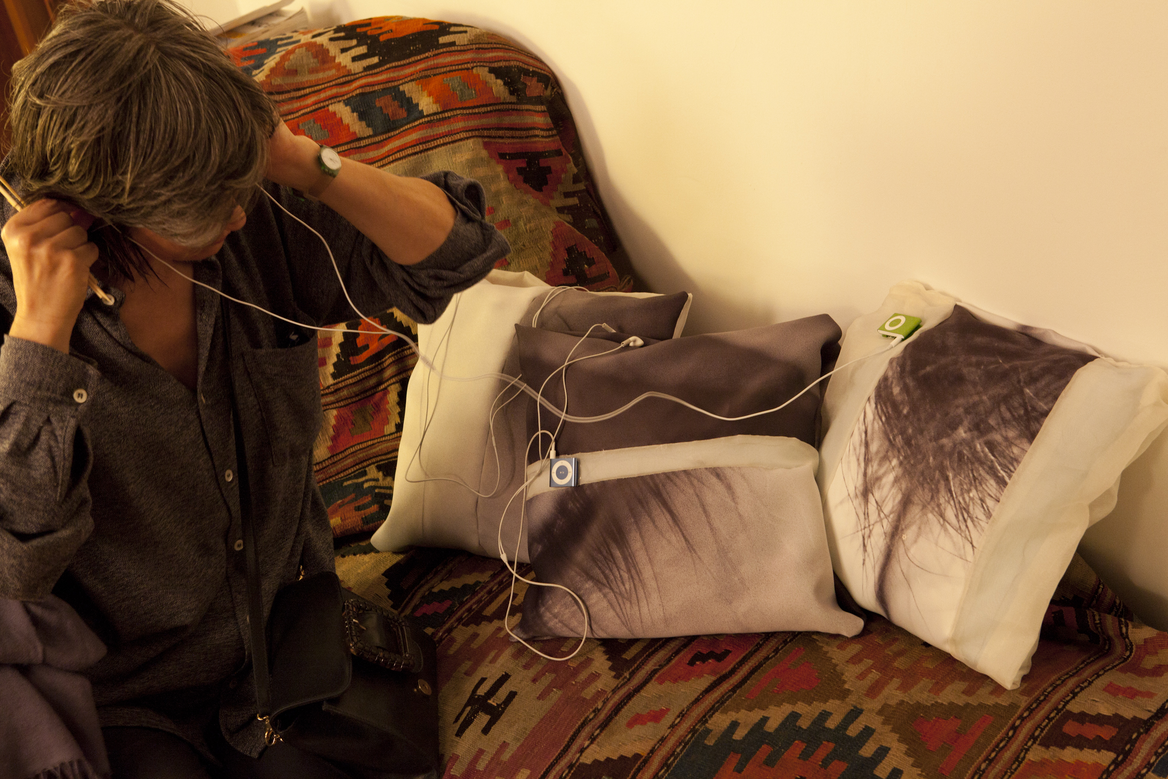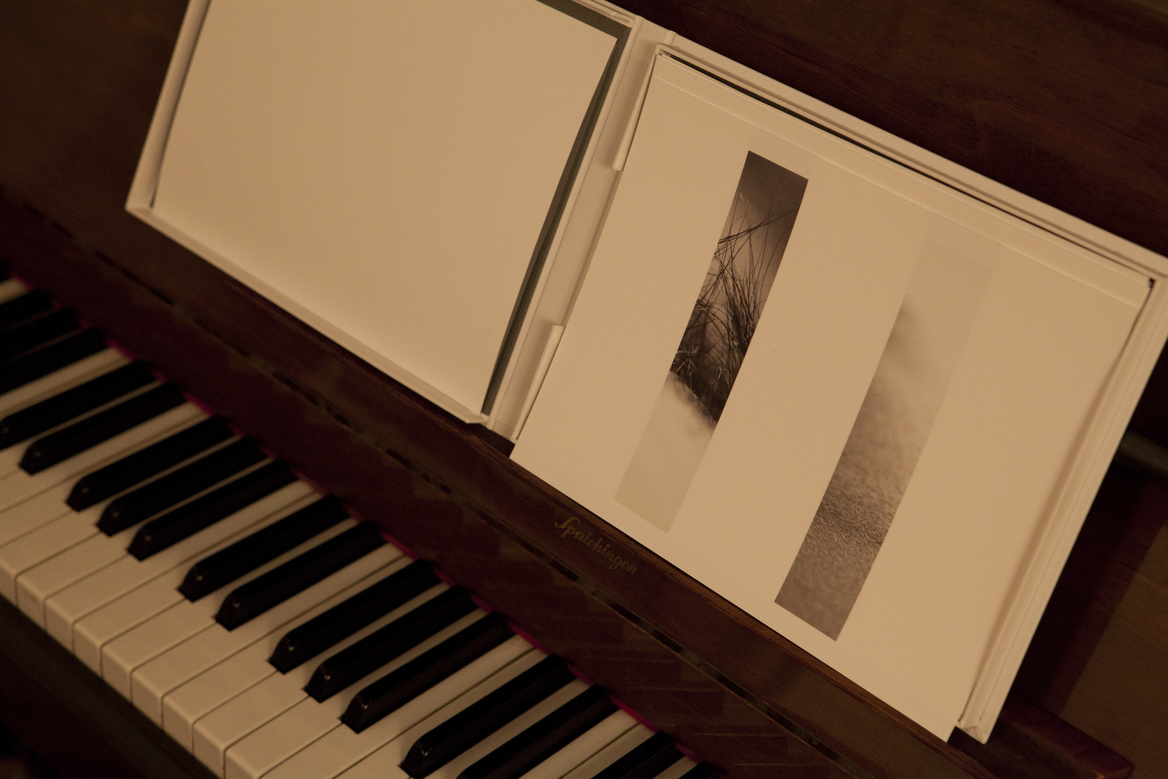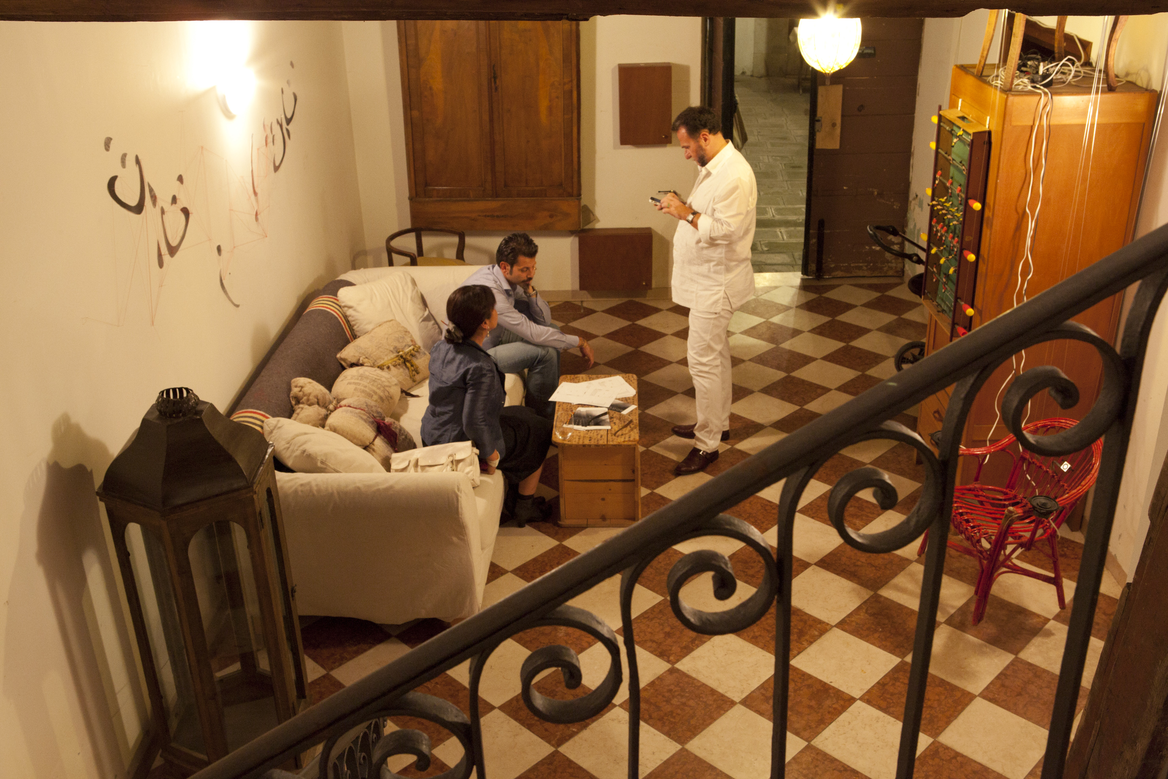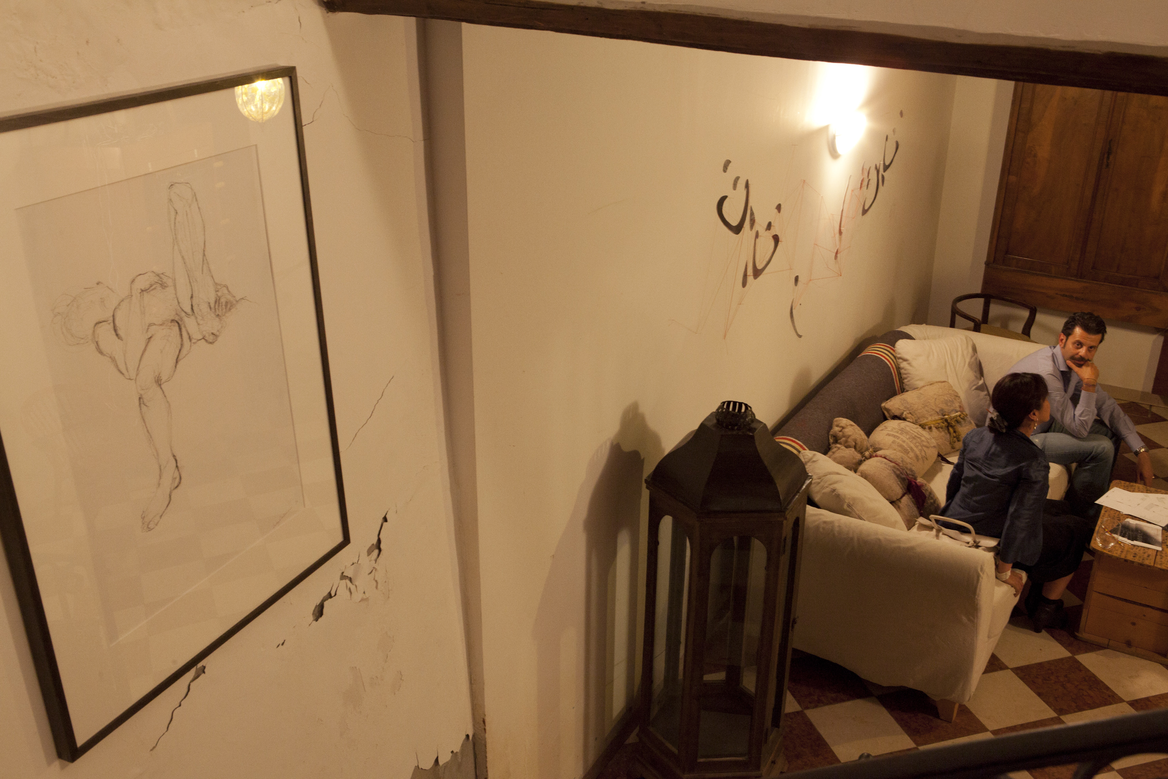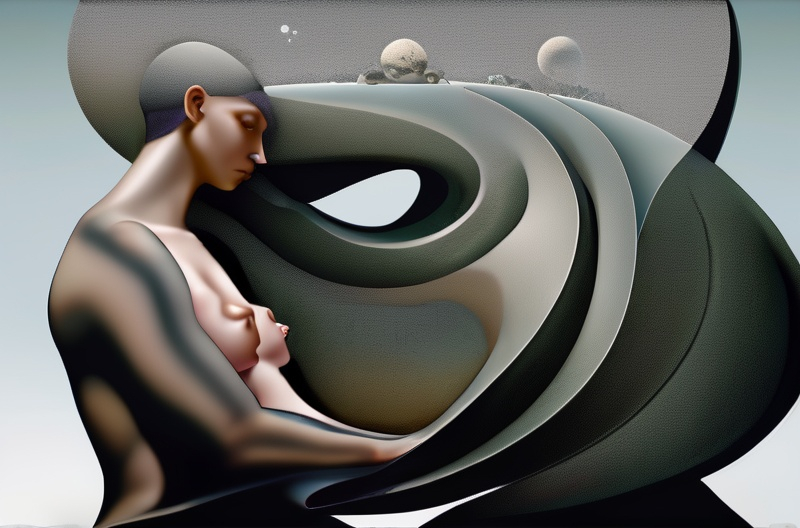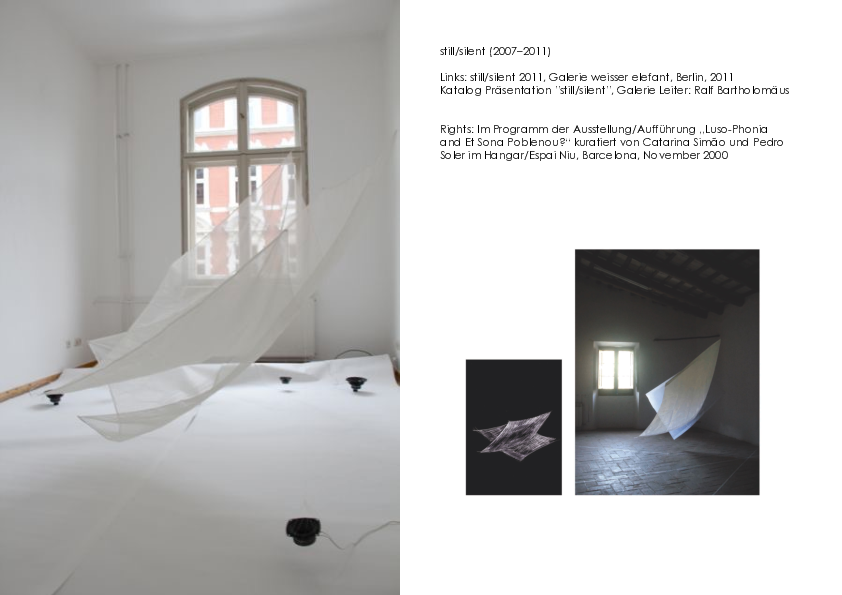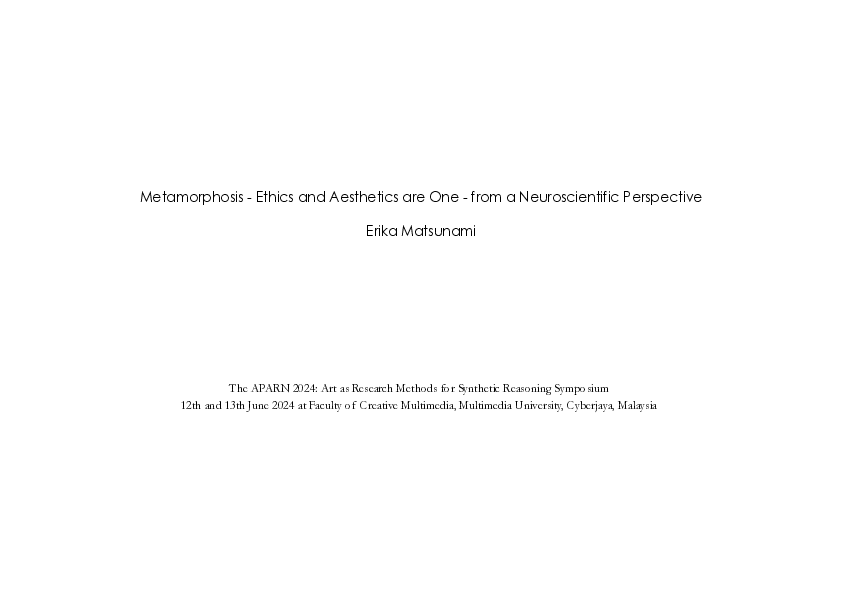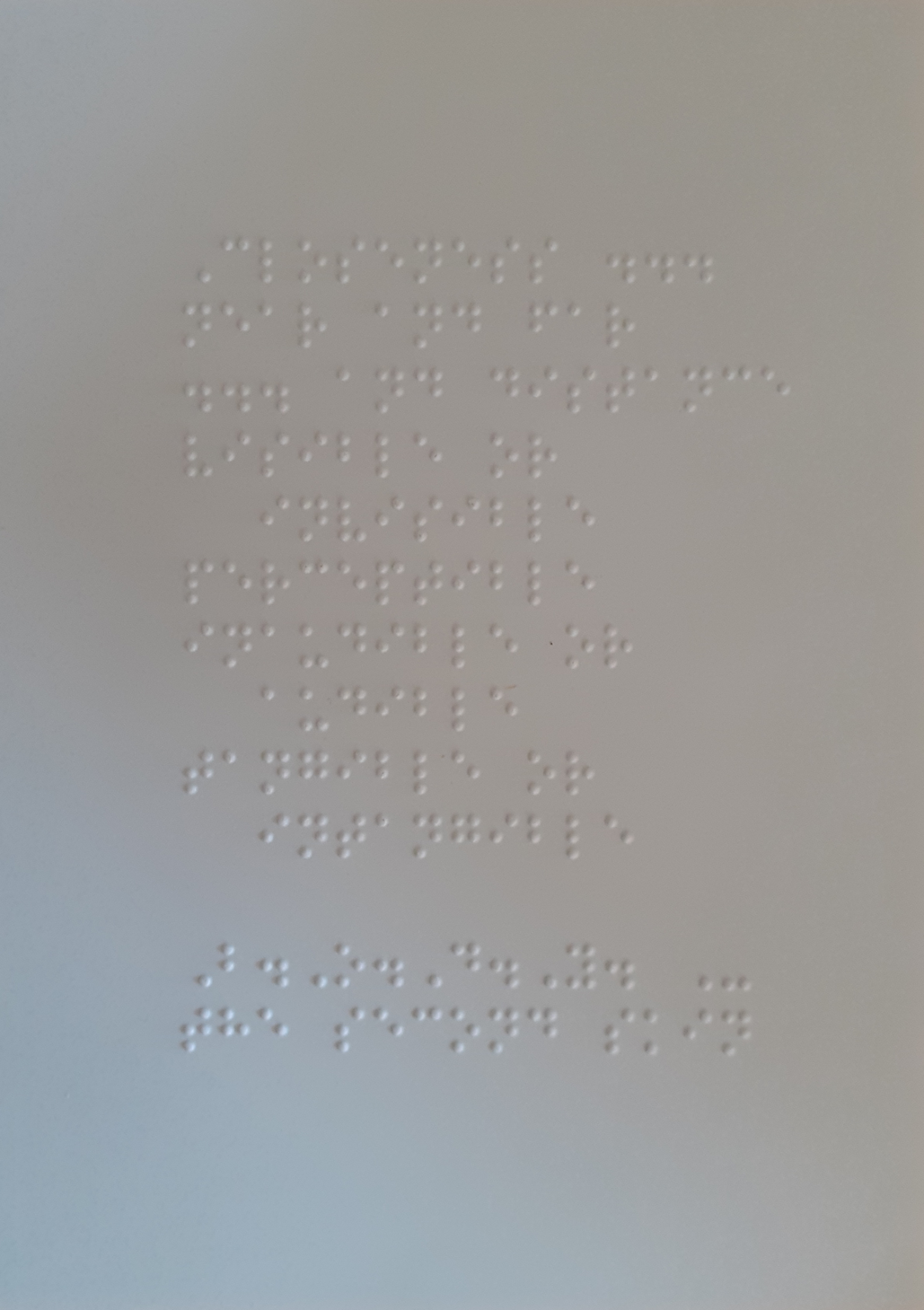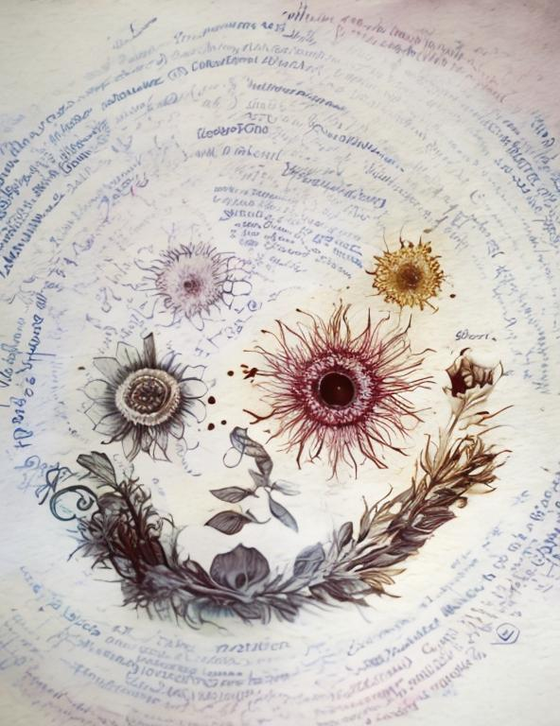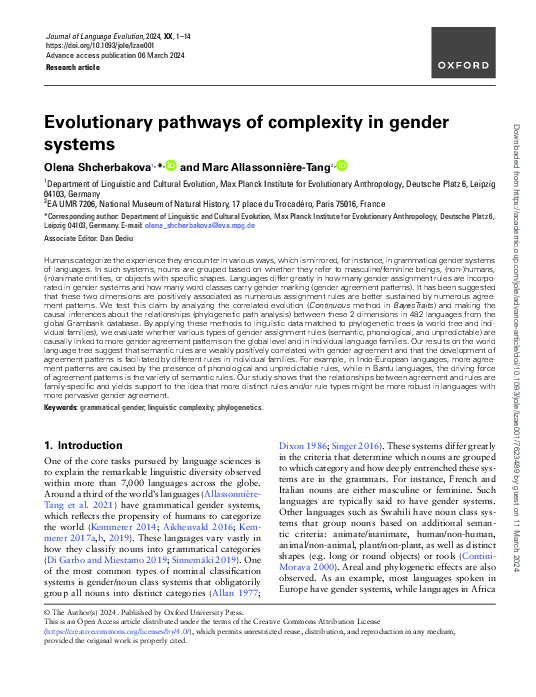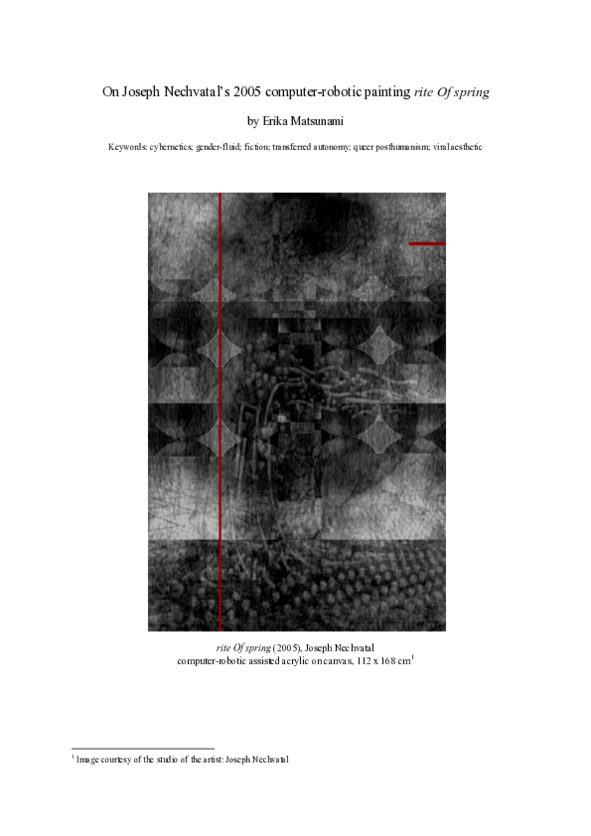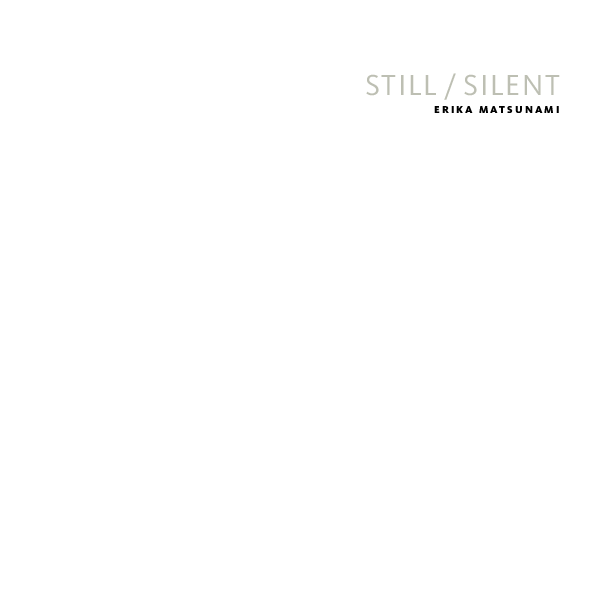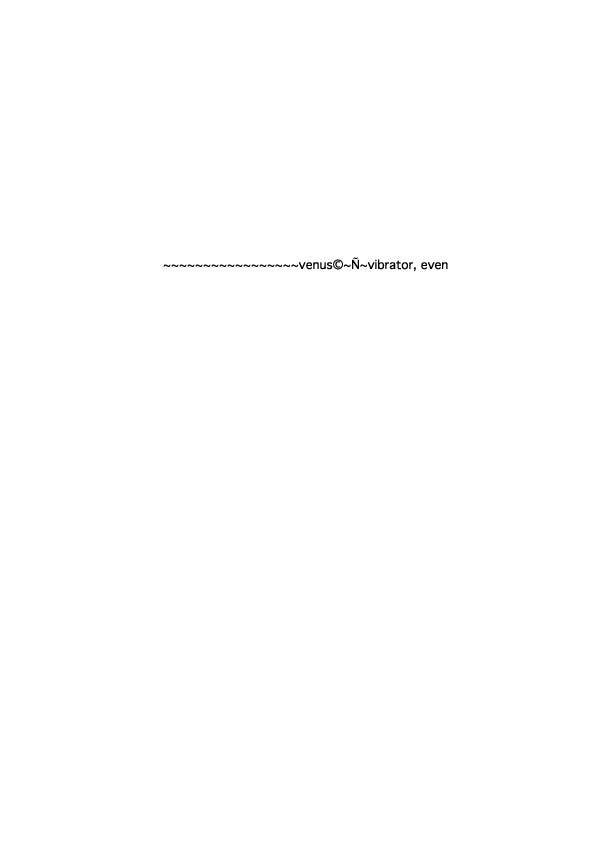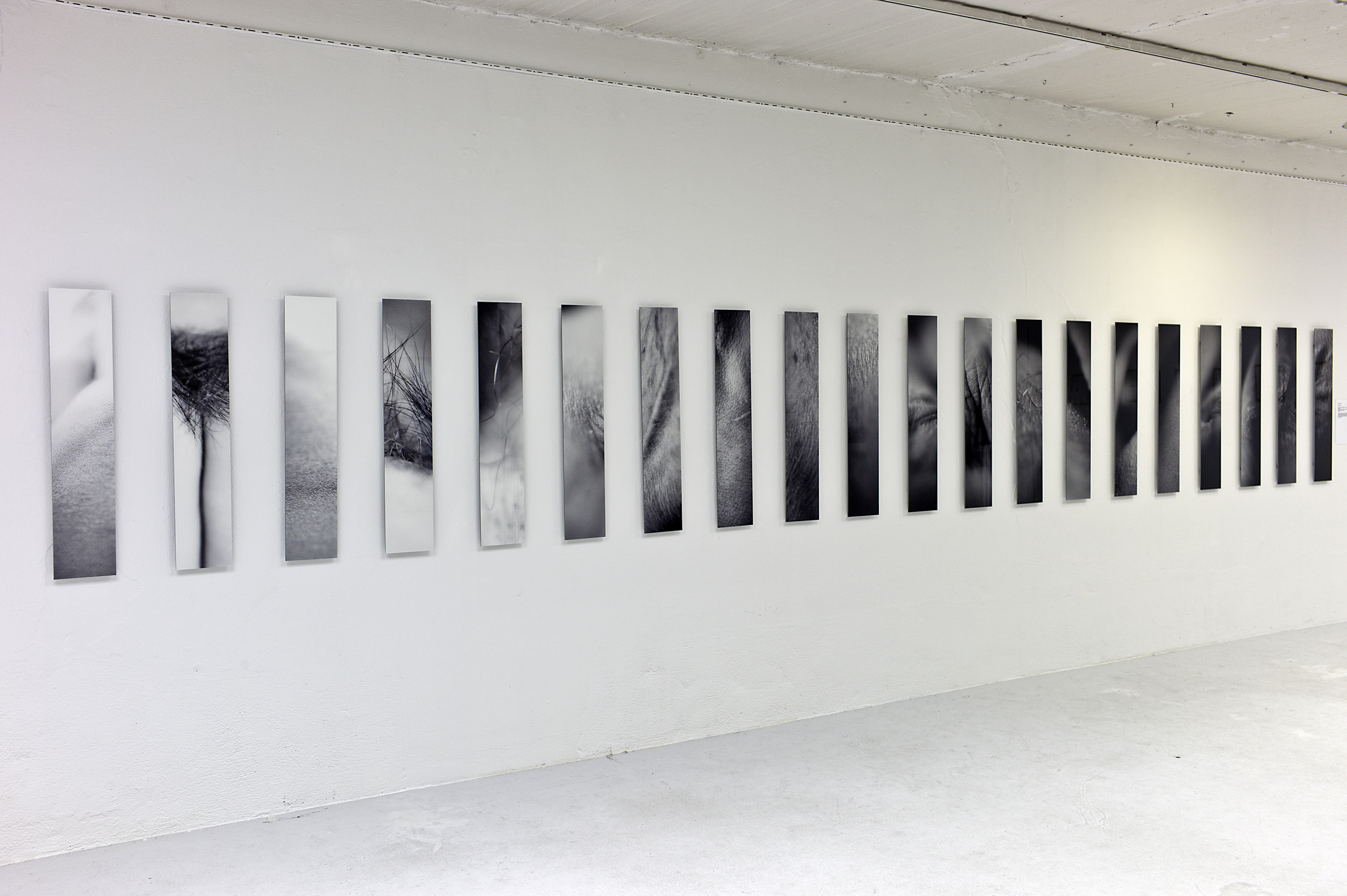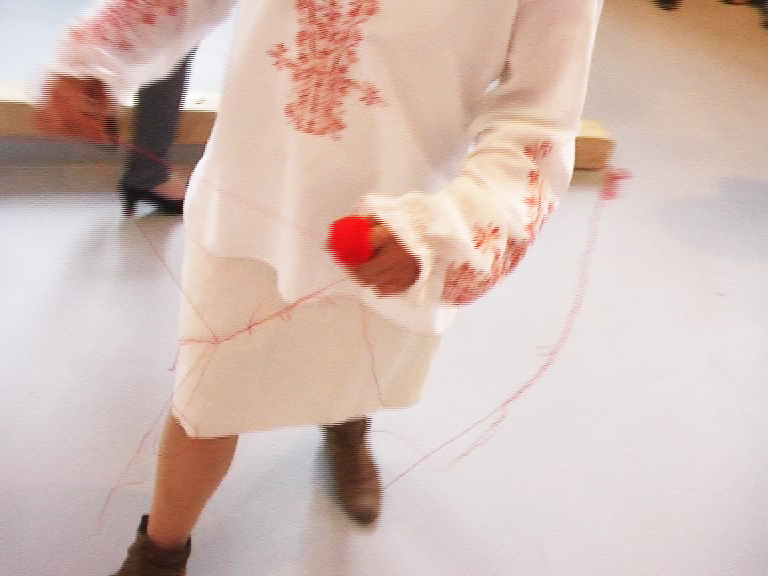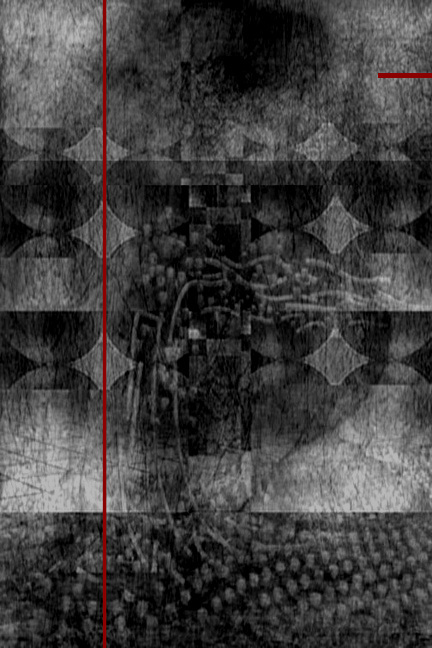Keywords: transversality*; interface (interact); post-conceptual; assemblage; spatiality; randomness; environment; coexistence;
*In mathematics, transversality is a notion that describes how spaces can intersect; transversality can be seen as the "opposite" of tangency and plays a role in general position. It formalizes the idea of a generic intersection in differential topology.
noun
1. geometry
a line intersecting two or more other lines
adjective
2. a less common word for transverse
The Solo Exhibition the project B.O.D.Y. - hidden codes in Venice, Italy, 2011
Non-profit exhibition project in Venice, Italy
Creative Play Ground/Artistic Intervention in a private space
Digital drawing with AI-generated Image (Raw) through the Poem Closeness and Distance (Original in German), 2024
Research question 3 Performance in the spatial installation "still/silent" (2011):
On today's sculpture
– Byond metaphysics
Ambient music is a loosely defined musical genre that incorporates elements of a number of different styles - including jazz, electronic music, new age, modern classical music and even noise.
Closeness ...
near and far
... and distance
visible or invisible
perceptible
inaudible or audible
tangible or intangible
– B.O.D.Y. - the second skin
Western painting is painted on linen canvas. Japanese painting is painted on silk panels, processing of hanging scrolls, etc.
Visible and invisible spatial installation for an audio (live electronics) and and visual (video) performance
– an assemblage with sound (6 channel mono discrete) and textile (2 x silks)
Dimension: Contrast with the Space (in the public space) or Room (in a building)
This installation "still/silent" (2011), Gelerie weisser elefent, Berlin is a silent spatial installation in the room.
Electroacustic music, electronic music, computer music
– dedicate to the victims of war* around the world
*Civilian victims mainly such as military comfort women, forced laborers, and coal miners, as well as forced conscription
War memorials are usually for warriors, but the cenotaphs for the atomic bombs of Hiroshima and Nagasaki were for civilians (workers for the military), includes American solder in prison of war, and Korean.
Sociological aspect:
For example,
- The status of integration in education
- Standards for the hearing impaired
- Educational practices and technology
Hearing aids
A world without the sound of outer world:
between inhabit(-ing) and habit
- A very short story (of) 4 x 4 video = 16 videos
by erika matsunami, 2021, Berlin
The Poem Closeness and Distance (German Braille Translation from Original Näher und Entfernung
in German), 2023
John Cage (September 5, 1912 – August 12, 1992)
4'33 (1952)
Score 4'33'' by John Cage
On musical ontology and metaphysics
from classical metaphysic to minimalism in postmodernism
A starting point of an experimental diary in practical exploring,
Digital drawing with AI-generated Image (Raw) through the writing, 2024
-> Their Master of Science Research is an epistemological research method. Analytical research method is such as by Niels Bohr's i.e. Bohr's model. Research out come is very often a metaphysical representation.
PhD in Science and Post-doc Research today is very advanced and complex research.
I am reading the research papers in neuroscience, brain medical research on the theme of Dementia. Molecular biology, Quantum physics are important.
Keywords: transversality*; interface (interact); post-conceptual; assemblage; spatiality; randomness; environment; coexistence;
*In mathematics, transversality is a notion that describes how spaces can intersect; transversality can be seen as the "opposite" of tangency and plays a role in general position. It formalizes the idea of a generic intersection in differential topology.
noun
1. geometry
a line intersecting two or more other lines
adjective
2. a less common word for transverse
Native American sandpainting
https://theojac.org/blog/2020/11/23/an-art-of-healing-navajo-sandpainting
The aim of this artistic research in the context of transversal aesthetics is a methodological suggestion for solving complex problems in an interactive relationships between the extrem poles from the biological aspect which is based on biological logic.
A connection to the social science:
- Socio-political content
- Critical theory
- Connection to People, contributing to people and by people
Participatory Project
Interactive Project
Workshop(e.g. on Articulation)
Rather than the "social sculpture", that was coined by Joseph Beuys (political struggle for the deconstruction of social class), I propose an artistic "social articulation" (coexistence for the middle-class centred social democratic society) in an environment.
Round-Table
Artistic Intervention
Artistic Activism
etc
Techniques vary depending on the artistic medium.
For example, between Photography, Film, Performance, Installation, and Painting, etc
I found this paper interesting methodologically. It gives me a new perspective. Thereby my artistic approach is how I recognize this informational research design.
Visual denotation and connotation
For future study of sculpture:
In metaphysics, ontology is the philosophical study of being. It investigates what types of entities exist, how they are grouped into categories, and how they are related to one another on the most fundamental level (and whether there even is a fundamental level).
Epistemology is the study/logic of knowledge; ontology of being. Metaphysics is often equated to ontology, though some think it has other purposes. They are different subject-matters, though they may be pursued by the same thinker, and with similar methodologies (e.g., analytic, existential).
These ontological approaches of knowing, perceiving and interpreting the world are generally lumped into four distinct categories: realism, empiricism, positivism and post-modernism.
Metaphysics could thus roughly be divided into two parts. The first is ontology, which is supposed to tell us what there is in general, or what kinds of things make up reality. The second is the rest of metaphysics, which is supposed to tell us, among others, what these things are like in various general ways.
Abstract: We articulate a distinction between ontology, understood as involving existence questions, and metaphysics, understood as either providing for metaphysical profiles of entities or else as dealing with fundamentality and/or grounding and dependence questions.
Dispositionalism is the opposite theory, giving ontological primacy to dispositional properties. Between these two extremes, there are dualists who allow both categorical and dispositional properties in their ontology.
Indeed, the cornerstone of Aristotle's ontology is his theory that reality is based on the substances of physical objects, not Forms. “'What is being? ' is just the question 'What is substance? '” Aristotle states in the Metaphysics (1028b5).
Research Questions
What are the research questions?
What is 'creativity' of humans?
What is an 'artifact?
What is the value of investigating them?
Awareness of natural human evolution, Reflection of humanity,
Are there any tentative hypotheses?
The state of nature (hypothesis)
In a fiction,
The nature does not mix, and coexists in each individual state and competes independently.
Problem / Phenomenon
Does a real-world problem(s) motivate the project?
Yes
What are the main phenomenon and specific sub-phenomena being investigated?
- Between Reality and Fiction
- Knowledge through Imagination
Between Post-Modernism and Contemporary
Between East and West
Between South and North
Between Tradition and Modernity
Between Men and Women
Between Human and Non-Human
Design the artistic research in sculpture:
Ontology is concerned with what is true or real. Epistemology: is the 'theory of knowledge'. It refers to the principles of what can be known and how you can know it; that is, how you can find out about it.
Ontology defines your research framework while epistemology determines the research questions that you will need to answer. Together, ontology, epistemology and methodology form an all-encompassing system of interrelated practice and thinking that defines the nature of your research.
Existentialism is an ontology that emphasizes the primacy of existence over essence and the importance of subjective experience in defining one's authentic self.
Ontological nihilism is the radical-sounding thesis that there is nothing at all. This chapter first discusses how the most plausible forms of this thesis aim to be slightly less radical than they sound and what they will have to do in order to succeed in their less radical ambitions.
"Ontological" is about what things exist. "Phenomenological" is about experiences.
Sample / Context
What sampling methods and sample will be used?
This check research sheet in the artistic research
Will the context of the research play an important role?
Yes, but topologically.
If so, what are the distinctive characteristics of the context?
Reference and connection to the various specific academic areas
e.g. visual arts, neuroscience music and linguistics
Thereby mathematics is a common.
Theory
Will theory be an important part of your research?
Yes. (Molecular biology)
Natural being
It referes to explore human-beings and humanity.
Nature and its reality in spacetime
(When considered from this perspective, I think that the pictures drawn by children are supernatural. Adults do not need to correct children's drawings.)
What role will theory play in your project?
Tool(s), not norm(s)
In otherwords, theory can be an important knowledge, that is not a norm. Theory can be a tool, for example in the context of aesthetic judgement methodologically.
String theory*
World lines and world sheet - for the 'String theory' artic
*Extra dimensions: In everyday life, there are three familiar dimensions (3D) of space: height, width and length. Einstein's general theory of relativity treats time as a dimension on par with the three spatial dimensions; in general relativity, space and time are not modeled as separate entities but are instead unified to a four-dimensional (4D) spacetime. In this framework, the phenomenon of gravity is viewed as a consequence of the geometry of spacetime.
Quantum gravity*
*The theory is based on the reformulation of general relativity known as Ashtekar variables, which represent geometric gravity using mathematical analogues of electric and magnetic fields. In quantum theory, space is represented by a network structure called a spin network, evolving in discrete steps.
What theoretical ideas / concepts / model / framework do you intend to use or develop What does theory mean or what constitutes theory in your discipline or field?
- Theoretical ideas and the concept of time that are integrated with the ever-changing nature
- Theory is, consciousness-based dealing with fact, tool of knowledge, logical and illogical,
- Formalism in the classical Fine Arts
Is the research based upon particular philosophical assumptions?
Ethics and Aesthetics are One
Art is something "x"
Does the research operate within a specific paradigm?
M.C. Escher (1898–1972)
Metamorphosis I, II, III:
Metamorphosis I (1937), Prints, Woodcuts
Metamorphosis II (1939/1940). Prints, Woodcuts
Metamorphosis III (1967–1968), Prints, Woodcuts
Relativity (1953), Lithography
What is 'painting'?
History of Painting
What is 'digital painting' by Joseph Nechvatal?
Automatism and Surrealism
Dadaism
Cubism and Conceptual art
Keywords: transversality*; interface (interact); post-conceptual; assemblage; spatiality; randomness; environment; coexistence;
*In mathematics, transversality is a notion that describes how spaces can intersect; transversality can be seen as the "opposite" of tangency and plays a role in general position. It formalizes the idea of a generic intersection in differential topology.
noun
1. geometry
a line intersecting two or more other lines
adjective
2. a less common word for transverse
Ontology defines the research framework, and empirical epistemology* asks questions about the research problems that need to be explored and solved. Ontologies, epistemologies, and methodologies together form a comprehensive system of interrelated practices and thinking that define the nature of research.
*The acquisition or assessment of knowledge base on practical or observable first-hand experience rather than theoretical explanation.
Empiricism is empirical knowledge. In contrast or difference to theory, experience can also serve as the basis of knowledge.
American contemporary art is a critique of American modernism.
-> to the thema of coexistence from the aspect of Computer sceince
Keywords: transversality*; interface (interact); post-conceptual; assemblage; spatiality; randomness; environment; coexistence;
*In mathematics, transversality is a notion that describes how spaces can intersect; transversality can be seen as the "opposite" of tangency and plays a role in general position. It formalizes the idea of a generic intersection in differential topology.
noun
1. geometry
a line intersecting two or more other lines
adjective
2. a less common word for transverse
Keywords: transversality*; interface (interact); post-conceptual; assemblage; spatiality; randomness; environment; coexistence;
*In mathematics, transversality is a notion that describes how spaces can intersect; transversality can be seen as the "opposite" of tangency and plays a role in general position. It formalizes the idea of a generic intersection in differential topology.
noun
1. geometry
a line intersecting two or more other lines
adjective
2. a less common word for transverse
The oldest known algorithms were inscribed on clay tablets by the Babylonians more than 4,000 years ago. The clay tablets document algorithms ranging from geometry to accountancy.
https://academic.oup.com/book/31959/chapter-abstract/267692279?redirectedFrom=fulltext
